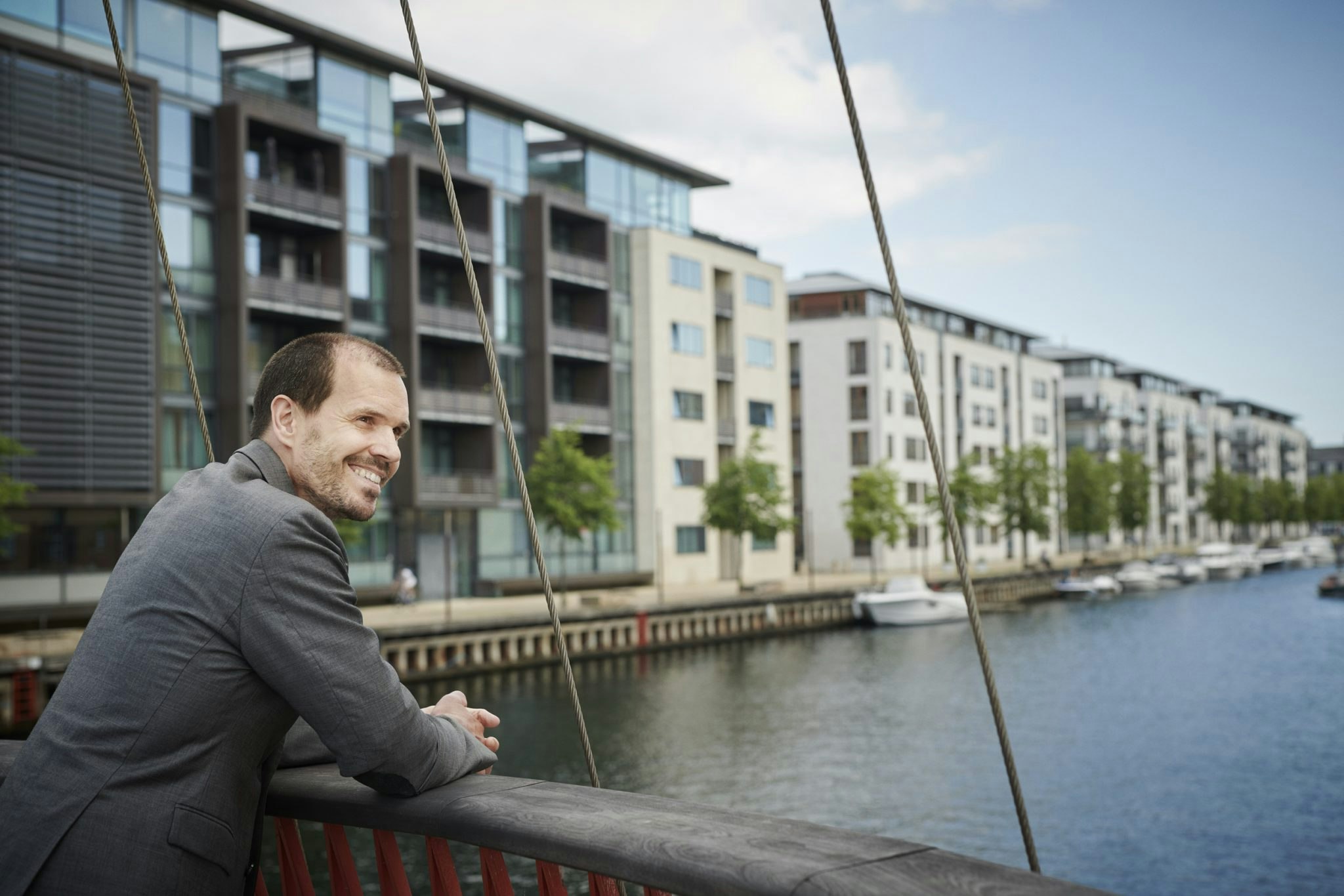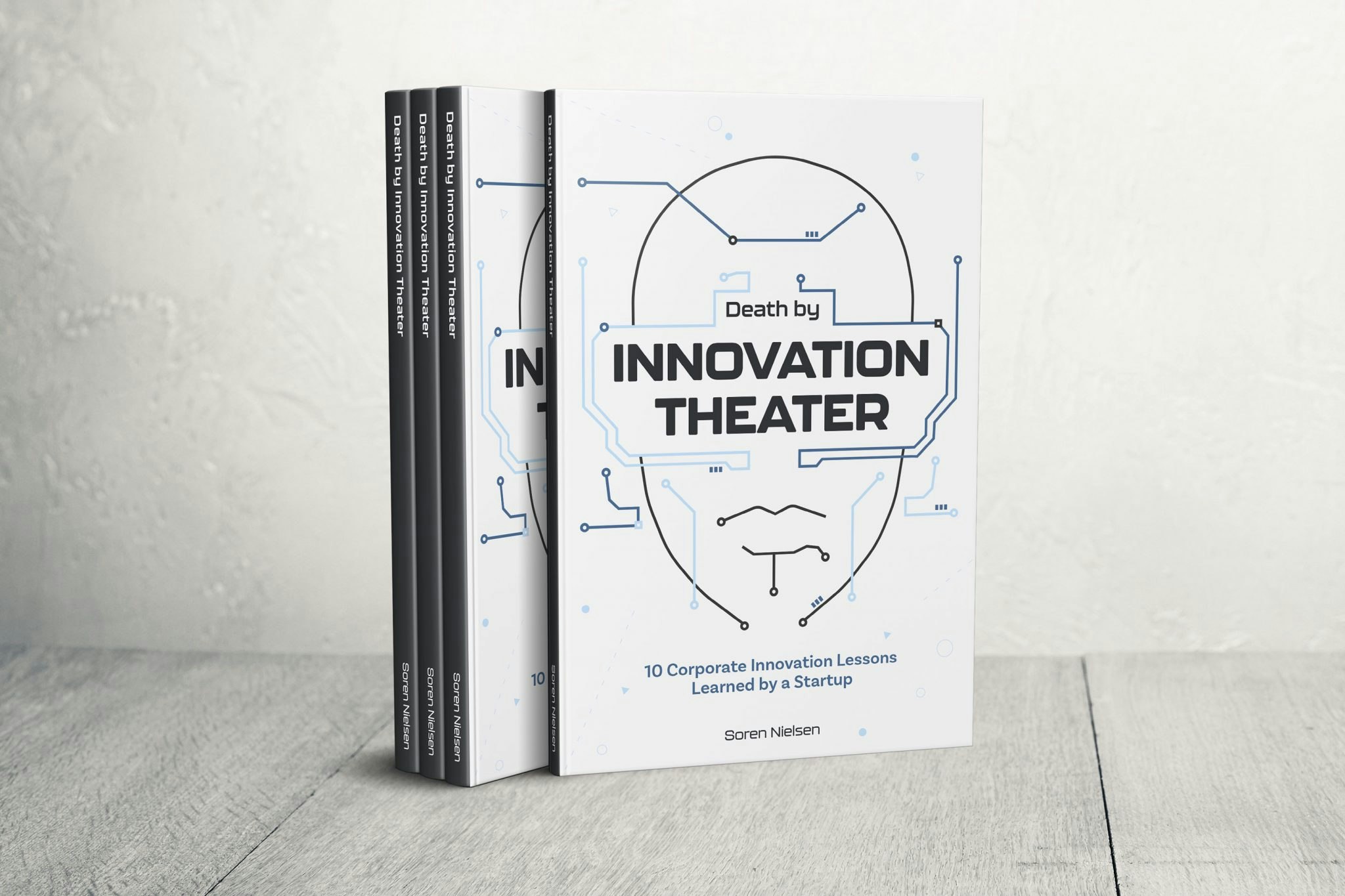In 2015 Soren Nielsen said goodbye to a well-paid, secure job to set up a pocket money app that would help children learn about finance and saving.
Nielsen had been horrified to realise how little his young daughter, four years old at the time, understood about the way money worked — referring to Nielsen’s credit card as the “magic money card”. He felt there was a market for an educational tool.

The startup, called Ernit, involved an IoT-connected piggy bank that lit up when you put coins in, as well as a mobile app. The team raised a first $100k from Kickstarter and then joined the Techstars programme to develop the company. So far, so good.
Initially, they planned to sell the app directly to customers, but when this proved tricky, the Ernit team pivoted to offer a white-label service for banks. The children’s banking app, they reasoned, could be a good customer acquisition and retention tool for them. They signed a deal with a big Danish bank and entered discussions with dozens more financial institutions.
“That’s where the innovation theatre really started,” says Nielsen.
A flurry of accelerator programmes and pitch competitions began. The Ernit team ran pilots with several banks — they were actually quite good at landing a pilot and were generally able to negotiate getting paid for doing them.
By the end I was a pilot master.
“By the end I was a pilot master — I knew exactly how to sell a pilot to a bank. We could have built a business just out of doing pilots — but that’s obviously not what we had set out to do, says Nielsen.
Each pilot would typically take six to nine months to carry out — three months usually for the pilot itself with some time before and after for the prep work and feedback. It was a lot of time for a small team to spend on something that ultimately didn’t lead to any further business.
“What I had missed was what would happen after the pilot finished,” reflects Nielsen. There was often little connection between the main company and the innovation team, no discussion about price or next steps. Over time, Nielsen became better at recognising the warning signals of when a project was likely not to lead anywhere — but the process of learning this was painful and occasionally funny.

“One time we travelled to South America for a week’s accelerator with a bank based there. When we got to the bank, the people in reception didn’t seem to know any of the people who were hosting us. It wasn’t a good start,” says Nielsen.
“When we did get in and walked through the bank, we went through all these departments where there were people in blue suits and white shirts, very formal bank employees, and then at the very back there was a detached creative space with beanbags and whiteboards.”
It was clear straight away, says Nielsen, that the innovation team were very disconnected from the rest of the operations and were likely to have little power to really integrate any startup from the accelerator programme into the bank.
Nielsen says he came across this separation a lot.
One of the people we talked to identified himself as ‘one of the innovation clowns’ as if he was proud of it.
“In one meeting one of the people we talked to identified himself as ‘one of the innovation clowns’ as if he was proud of it. But when you position yourself like that, it is hard for the rest of the company to take you seriously,” he says.
Often the pitch days and accelerators were attended only by very junior employees on the bank’s side, none of whom would have any power to make decisions.
I thought about just sneaking out and leaving,
“One time I drove seven hours to a startup speed dating event in the Netherlands. I had tried to find out beforehand if any real decision-makers would be there and had been assured that there would be. But when I got there, it was immediately obvious it was just juniors and people who had just been hired. I thought about just sneaking out and leaving,” Nielsen says.
Eventually, in 2019, Nielsen decided to call it a day. Ironically it was the same day Ernit had received a PSD2 banking licence. They had even raised some money from angel investors and had the prospect of more funds. But Nielsen just couldn’t see a way of scaling the business. He had stopped believing in it.
Calling our early business angels was one of the hardest calls I have had to make.
“I gave up,” says Nielsen. “Calling our early business angels to tell them that was one of the hardest calls I have had to make.”
Nielsen isn’t saying that corporate innovation theatre was the only thing that killed the business. In retrospect, it is easy to pick up a number of flaws in Ernit and a number of mistakes the team made. Becoming too hung up with having a physical IoT piggy bank was probably not the right move. IoT was a big buzzword back in 2015 but developing hardware added a level of complication to the project.
“The usual advice from investors is that ‘if you can touch it, don’t touch it,'” laughs Nielsen.
Trying to sell the app as a white-label service for the banks was probably also a mistake, he says. They were never able to make a clear enough business case for banking customers. Going directly to the consumer like GoHenry, the UK-based children’s banking app has done, might have been smarter in the long term.
But what left Nielsen feeling particularly frustrated was not getting clear enough feedback from all the corporate interactions. Ernit ended up getting caught up in innovation theatre that wasted everyone’s time and didn’t provide them with any real guidance on market fit or direction. It was a limbo — a vacuum.
Corporate innovation theatre was part of a pattern that led to our downfall.
“Corporate innovation theatre was part of a pattern that led to our downfall,” Nielsen says.

Nielsen has now written a book, Death by Innovation Theater – 10 Corporate Innovation Lessons Learned by a Startup, to help other startups avoid the same fate. “I felt like someone needed to step up and talk about it. It is a common problem,” he said. Nielsen shared a few tips with Sifted:
1. Stop doing pilots without discussing the end deal
A pilot is ok if the product has never been tested before, but if it is already working somewhere, in another market or with another company, there is no point in running another pilot.
When startups start questioning why they should do a pilot, corporate partners often take them a lot more seriously. You should only do pilots where you from the very beginning also have the discussion about pricing and a genuine deal.
Now as chief commercial officer at Subaio, a subscription management service for bank customers, Nielsen never does pilots without negotiating the price of the end deal. Subaio’s system is more advanced than Ernit was in the early days and so it has less need for pilots.
"We try to stay clear of pilots, which helps weed out the serious clients from the timewasters. I’m not saying it is easier, but it wastes less time,” says Nielsen.
2. Don’t do pitch competitions
Nielsen actually likes pitching. He acts as a pitching coach for a lot of startups.
“If I could earn money just by doing pitches I would be fat and rich right now,” he says. But a corporate pitch competition, with a limited time, a panel of judges and a so-called winner at the end rarely results in any real business for a startup.
The deals and pilots that Ernit did never came through a pitch competition — even when they won.
3. Don’t fall in love with a particular technology...
...even if it is a hot area that opens up lots of conversations for you. IoT was smoking hot in 2015 and a lot of banks wanted to explore it. But ultimately, the connected piggy bank didn’t really work for the Ernit proposition. Without the buzz, the team might have realised that faster.
4. Clear success criteria
Corporates and startups need to get better at judging and agreeing on the success of a pilot. Too often there was a focus on vanity metrics, like the number of downloads that the app had had, rather than the number of active users.
Nielsen says should have demanded clearer success criteria — what would happen if the startup hit x in month one, y in month two and what needed to happen in month three to make the project good enough to take through to scaling up.
5. Always make a business case. Always!
Startups might worry that it is hard to put their value into numbers, but if you can’t make a business case you will never get past the innovation department.
Business cases are used internally by the corporate to prioritise their efforts. It also forces both the startup and the corporate to think about the real value. Otherwise, the product is never challenged on crucial factors — no one ever says 'hang on, what IS the business case here?'



